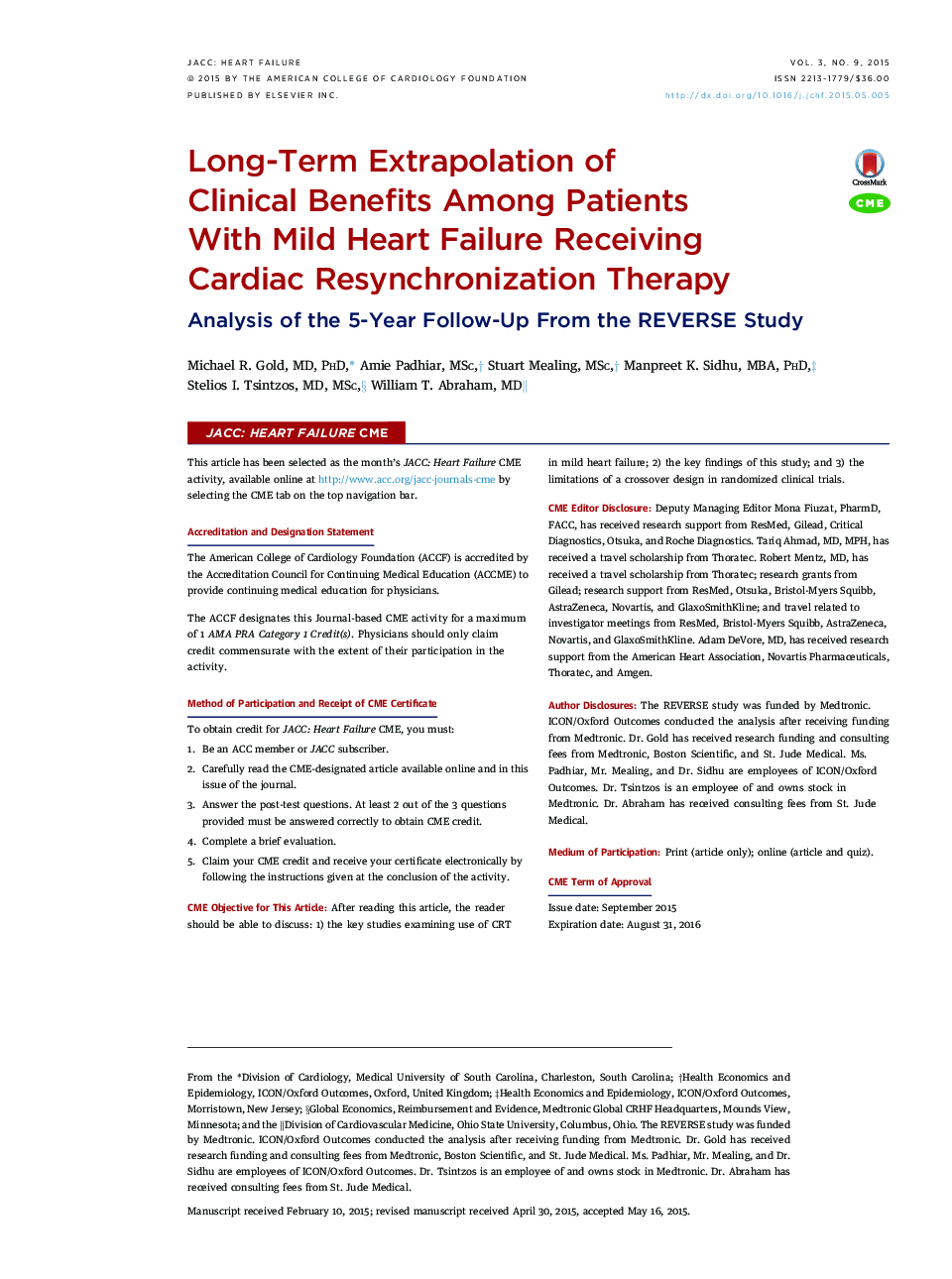| کد مقاله | کد نشریه | سال انتشار | مقاله انگلیسی | نسخه تمام متن |
|---|---|---|---|---|
| 2942467 | 1177126 | 2015 | 10 صفحه PDF | دانلود رایگان |

ObjectivesThis study sought to assess the lifelong extrapolated patient outcomes with cardiac resynchronization therapy (CRT) in mild heart failure (HF), beyond the follow-up of randomized clinical trials (RCTs).BackgroundRCTs have demonstrated short-term survival and HF hospitalization benefits of CRT in mild HF. We used data from the 5-year follow-up of the REVERSE (REsynchronization reVErses Remodeling in Systolic left vEntricular dysfunction) study to extrapolate survival and HF hospitalizations. We compared CRT-ON versus CRT-OFF and CRT defibrillators (CRT-D) versus CRT pacemakers (CRT-P).MethodsMultivariate regression models were used to estimate treatment-specific all-cause mortality, disease progression, and HF-related hospitalization rates. Rank-preserving structural failure time (RPSFT) models were used to adjust for protocol-mandated crossover in the survival analysis.ResultsCRT-ON was predicted to increase survival by 22.8% (CRT-ON 52.5% vs. CRT-OFF 29.7%; hazard ratio [HR]: 0.45; p = 0.21), leading to an expected survival of 9.76 years (CRT-ON) versus 7.5 years (CRT-OFF). CRT-D showed a significant improvement in survival compared with CRT-P (HR: 0.47; 95% confidence interval [CI]: 0.25 to 0.88; p = 0.02) and were predicted to offer 2.77 additional life-years. New York Heart Association (NYHA) functional class II patients had a 30.6% higher HF hospitalization risk than class I (I vs. II incident rate ratio [IRR]: 0.69; 95% CI: 0.57 to 0.85; p < 0.001) and 3 times lower rate compared with class III (III vs. II IRR: 2.98; 95% CI: 2.29 to 3.87; p < 0.001).ConclusionsRPSFT estimates yielded results demonstrating clinically important long-term benefit of CRT in mild HF. CRT was predicted to reduce mortality, with CRT-D prolonging life more than CRT-P. NYHA functional class I/II patients were shown to have a significantly reduced risk of HF hospitalization compared with class III, leading to CRT reducing HF hospitalization rates.
Journal: JACC: Heart Failure - Volume 3, Issue 9, September 2015, Pages 691–700